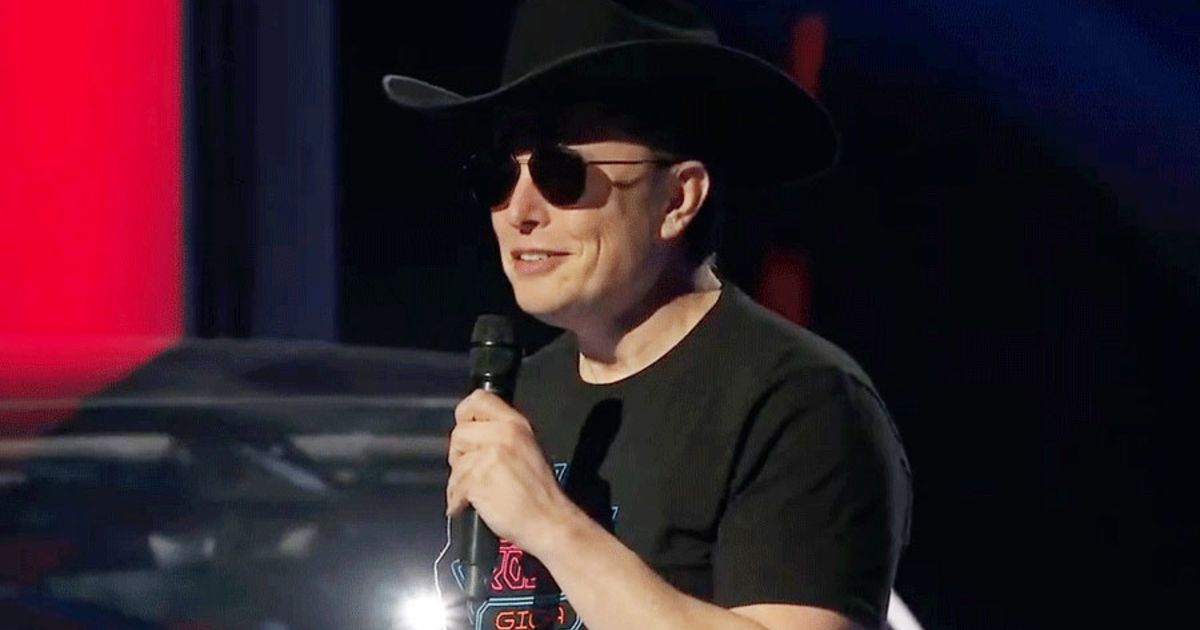
Tesla‘s long-delayed, wildly styled Cybertruck pickup will finally reach production in pickup-crazy Texas next year, CEO Elon Musk promised while inaugurating the electric automaker’s massive Austin factory last week.
Musk, who had previously hedged over Cybertruck timing due to supply-chain shortages, expressed far greater certainty last week in front of thousands of cheering fans who are looking for their next Tesla product to love. The angular Cybertruck was first shown in 2019 and slated for launch two years later.
“We’re going to have an incredible Cybertruck product for you next year,” Musk said at the event, which featured colored lights, electronic music and the latest Cybertruck prototype. “It’s going to blow your mind.”
In a new announcement, the billionaire CEO said the automaker is also working on a dedicated robotaxi model using the company’s autonomous vehicle software.
Tesla is also trying to make current models fully autonomous, but is likely years away, according to experts.
Musk, wearing a cowboy hat and sunglasses, delivered the first Model Y crossovers out of the massive Austin facility in a party-like atmosphere that was streamed live on the Tesla website.
“We’re aiming, just with the Model Y program alone, to get to half a million units a year and then we’re going to start manufacturing Cybertruck here next year,” Musk said.
Two weeks earlier, Musk headlined a similar event in Berlin to inaugurate the automaker’s first European plant, which also began production with the Model Y.
Musk, 50, said last week that Tesla is working on other products that would remain secret. He also said there will be a broader rollout of driver-assistance software that Tesla calls Full Self-Driving. A limited number of customers have been given access to the full beta version for testing.
“I’m not going to spill all the beans right now, but what I can say is we’re going to move to truly massive scale,” Musk said on a stage inside the Texas factory.
“Massive scale, Full Self-Driving, there’s going to be a dedicated robotaxi that’s going to look quite futuristic.”
Musk didn’t offer a detailed timeline for the rollout of such delayed products as the second-generation Roadster sports car and the Semi cargo truck, but he said 2023 will be more focused on product after this year’s focus on production volume.
“We’ll be in production with Roadster and Semi,” Musk said. “So this year is all about scaling up, and then next year there’s going to be a massive wave of new products.”
That includes a humanoid robot called Optimus. Musk said an early version of the robot could be ready next year.
One possible roadblock to Tesla’s expansion plan is the semiconductor shortage that is causing temporary plant shutdowns across the industry. Tesla has managed the shortage better than some automakers but has also been forced to remove vehicle features in order to reduce chip use.
“I’m not sure how much more volume Berlin and Texas can add, given the supply constraints in the industry right now,” said Jessica Caldwell, executive director of insights at Edmunds. “That said, these new factories do set Tesla up well to further take on its competitors in the next few years.”
The Austin opening ceremony last week was called Cyber Rodeo and included factory tours showing off advanced manufacturing techniques. Tesla will also make batteries at the site, Musk said.
On social media, Tesla fans streamed video from the plant. Outside, Model Y vehicles in red, white and blue were arranged in the form of the Texas flag. Some visitors sported cowboy-themed attire, and there was a mechanical bull for entertainment.
With Tesla’s recent factory expansion, global annual production is expected to rise from about 1 million vehicles last year to about 2 million in 2023, according to analysts. Tesla now has four vehicle assembly plants with the addition of Austin and Berlin to Fremont, Calif., and Shanghai.
With estimated first-quarter U.S. sales of 110,000 vehicles, Tesla is now leading the luxury segment and demand is easily outstripping its supply. Depending on the vehicle and trim, wait times for a new Tesla model can be several weeks or several months.
In Austin, Tesla is also expected to produce a more affordable version of the Model Y. The current U.S. base model, the Long Range, with 330 miles of range, starts at $64,440 with shipping. Tesla has certified two new Model Y versions with the EPA with ranges of 244 miles and 279 miles, according to Reuters.
Musk didn’t offer any new details on those Model Y trims.
While the compact crossover is an important volume model for the brand, Tesla fans are clamoring for the unpainted, stainless steel Cybertruck. It will come to market well after electric pickup rivals such as the Rivian R1T now on sale and the Ford F-150 Lightning that will launch in coming weeks.
Sam Fiorani, vice president of global vehicle forecasting at AutoForecast Solutions, expects the Cybertruck will go into production toward the end of next year and said a commercial van could also be made in Texas.
“Following the introduction of the Model Y, Giga Texas will introduce the Cybertruck, currently scheduled for October 2023,” Fiorani told Automotive News in an email.
“The Semi was expected to arrive in 2023 as well, but that might have been delayed. Tesla should introduce a large commercial van in 2024, depending on how the rollout of the Cybertruck proceeds. An update to the Model Y is expected to arrive in 2027,” Fiorani said.
The second generation of the Tesla Roadster, which has been delayed for several years, is expected to eventually come out of the company’s Fremont plant.